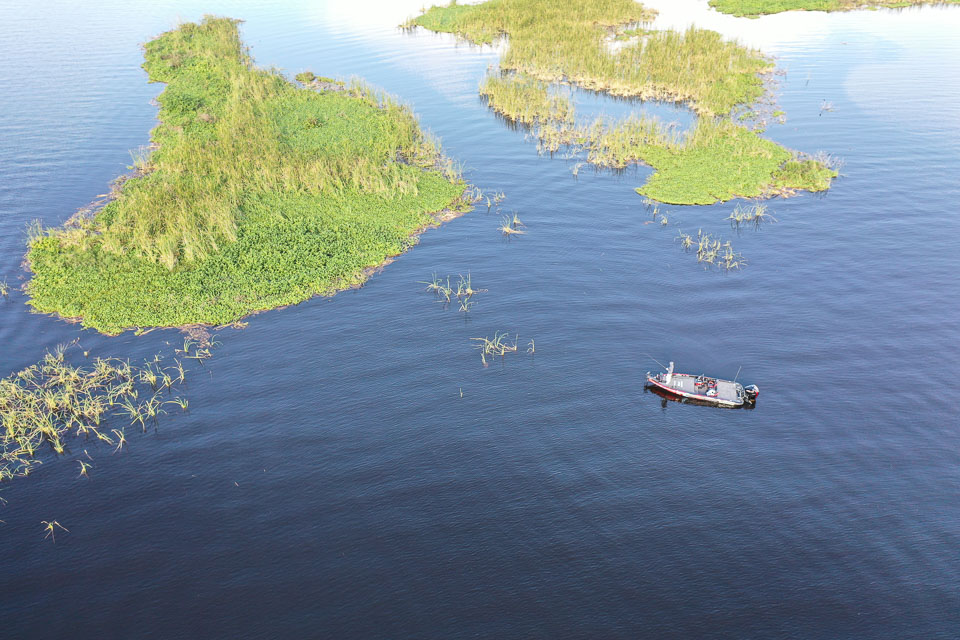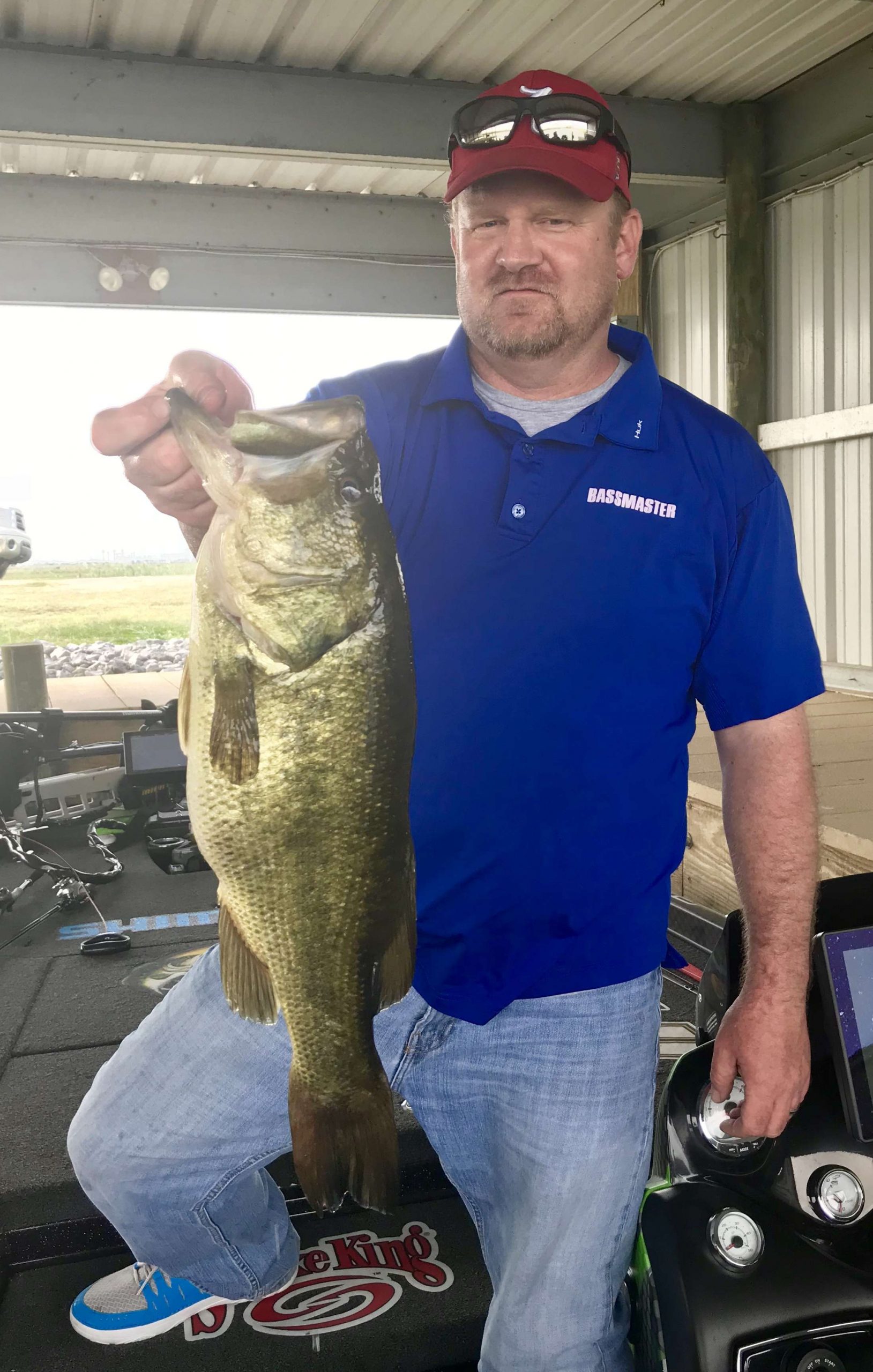
CLEWISTON, Fla. — The bass fishing at Lake Okeechobee is phenomenal.
There will never be better proof of that than Scott Martin’s record-setting 90-pound, 6-ounce winning total during last week’s St. Croix Bassmaster Open presented by SEVIIN — and if that was the end of the story, everyone associated with the lake would be happy.
Unfortunately, Martin says the lake’s story is developing daily — and not in a good way.
“People will see how I caught them last week and how everybody caught them, and they’ll say ‘Oh, my gosh, Lake Okeechobee is amazing’ — and it is,” Martin said. “But it’s dwindling. Last year, there were about eight or nine places to catch good fish. This year, we’ve got about six places. Next year, we might have five places or four places.”
The source of Okeechobee’s growing problem is too much water — and it’s the kind of water that doesn’t allow for a healthy ecosystem.
“The U.S. Army Corps of Engineers is holding Lake Okeechobee significantly higher than in the past — around 16 feet above sea level,” said B.A.S.S. Conservation Director Gene Gilliland. “If you go further upstream into central Florida, that’s where the water comes from. As that water comes south, it picks up all sorts of nutrients. By the time it reaches Okeechobee, that water is usually very dark, algae and tannic combined.
“You don’t have a lot of light penetration through that kind of water, and when the lake is held high, you don’t get sunlight down into the water that helps aquatic plants grow.”
Gilliland also stressed that, historically, low-water periods (12 to 13 feet) some years on Okeechobee encouraged the growth of submerged aquatic vegetation that provided favorable nursery conditions for sport fish and forage fish.
“That natural fluctuation was so important,” Gilliland said. “That high water was usually temporary and it didn’t shade out all of that vegetation. Now it’s become a regular thing.”
How did we get here?
Okeechobee was once a natural lake, and when it got full, the water just overflowed south to the marsh areas of the iconic Florida Everglades, all the way down to Florida Bay at the tip of our country. But through the years, the construction of dikes, levees and canals enabled the Corps to manage the lake more like a manmade reservoir. Most notably, they were able to divert excess water to the east through the St. Lucie River into the Atlantic Ocean and to the west through the Caloosahatchee River into the Gulf of Mexico.
This kept Okeechobee at favorable levels and allowed the Corps more options during the floods that are so common in Florida. However, the releases had unwanted consequences.
As the massive amounts of fresh water reduced the salinity in the St. Lucie and Caloosahatchee — two of Florida’s main coastal estuaries — toxic blue/green algae blooms began to occur. The blooms caused a reduction of marine life and a reduction of tourism to those areas.
Eventually, numerous groups mobilized and lobbied for a court order to all but stop the discharges. That left Okeechobee quite literally stuck in the middle.
“The issues they’ve had on the East and West Coast of Florida with these harmful algal blooms, a lot of that kind of stuff makes the headlines,” Gilliland said. “Unfortunately, from the bass fishing perspective, Lake Okeechobee has kind of gotten lost in the shuffle and become a tool to help fix some of those other problems.
“Other canals do dump water to the south and they’re in the process of trying to build some additional storage reservoirs to help with the excess water. But ultimately, the long-term plans for restoring the Everglades — an iconic area that has some very big benefits to all sorts of things in South Florida — are really long-term plans. They’ve been in the works for decades already and will still be in the works for decades to come, primarily because the price tag is so ridiculously high.”
That leaves concerned anglers like Martin to wonder what happens to Lake Okeechobee while we wait for those plans to come to fruition. As you’d expect, he has some thoughts on what should happen.
Martin’s vision
The son of B.A.S.S. superstar Roland Martin and an industry-savvy professional himself, Scott Martin knows the key to almost any problem is money. He’d like to see $50 million a year in funding for Lake Okeechobee — and if given the reigns to the project, he knows exactly how he’d spend much of it.
Since the lake is massive at 145,000 surface acres, “wind tides” often keep the water stirred up and prevent light from nourishing submerged aquatic vegetation. Martin would like to see the Corps build some concrete wind dams and berms that would shield certain areas and allow for favorable habitat growth while also serving as good fishing structure.
He’d like to see an “aggressive grass-planting project” for plants like eelgrass — and even one that’s much more controversial.
“One thing that I’d really fight for is planting hydrilla in Lake Okeechobee,” Martin said. “Hydrilla is kind of a dirty word with the Corps. They’ve got it on the eradicate list, and I would agree that hydrilla is not right for certain lakes. But for certain lakes it is.
“Lake Okeechobee is never gonna be overrun by hydrilla. It’s too big and fluctuates too much. We all know how important hydrilla is to the health of some fisheries, what a great water filter it can be.”
In the short term
If he had his way today, Martin would simply like to see Okeechobee lowered and managed closer to traditional levels.
“I think everybody just needs to take their medicine for a minute, get the lake level down and just manage it 2 feet lower,” he said. “Manage it from 13 to 15 1/2 feet. It’s the same thing. They could just start back at a lower level, but they don’t want to do it.”
Until a breakthrough is made, Martin is urging anglers to do their part to save one of the most iconic bodies of water in bass fishing history.
“We need to be majorly part of the conversation,” he said. “We need to show a good presence. Show the officials that there are a lot of people who care about this lake around the whole world.”
He urges anglers to write letters and emails to Florida Governor Ron DeSantis, the Jacksonville District Office of the Corps of Engineers and to the South Florida Water Management District.
“We’re in a dangerous time, and this is just too important,” he said. “Just let them know that we’re not gonna let them kill Lake Okeechobee.”
To learn more about the current situation with Lake Okeechobee, visit anglersforlakeo.org.





